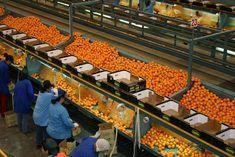
The return to form of Israel’s citrus industry is best expressed by the vote of confidence it received from growers this year: they have planted 1,200 hectares of new citrus groves, more than in any other single year over the past 30 years.
The trend for new plantings started a few years ago as profitability increased in the sector, especially with the introduction of several new easy-peel varieties. According to the citrus division of Israel’s Plants Production & Marketing Board, the total area under citrus production in the country has reached 21,000ha. “The trend of increasing plantations is expected to continue in the next four to five years,” said Tal Amit, manager of the citrus division at the board.
He estimated that total yields during the 2006-07 campaign reached 634,000 tonnes, and the same yield is expected in 2007-08.
The most significant change is the decline in plantings of orange groves and the rise in plantings of easy peelers and grapefruit. The easy peelers leading the charge are Or, Ora and Merav, as well as increasing yields of satsumas.
As far as exports are concerned, pigmented and white grapefruit dominate reaching an export volume of 77,000t this past season - some 46.5 per cent of the total export basket. This is followed by the export of easy peelers, with 49,500t and a 30 per cent share; and oranges on 31,000t (20 per cent). Other low-volume varieties make up the remainder.
Amit expects total Israeli citrus exports this season will decline by 8,000t to 165,000t due to tough competition from Turkey on red grapefruit. Israeli citrus growers face a challenge in terms of their tax-free easy peeler quotas to the EU. Amit maintains that Israel could sell larger quantities of its fruit to the EU if these quotas were enlarged. The Israeli farm ministry is in negotiation with EU authorities to change the union’s existing policy.



